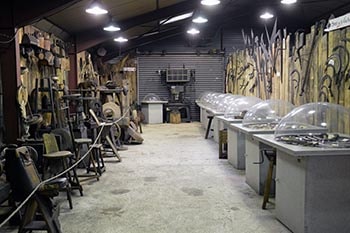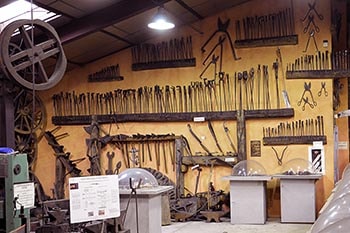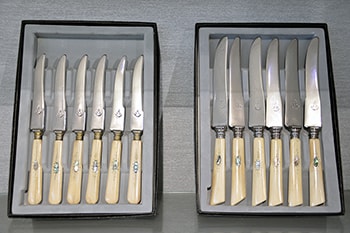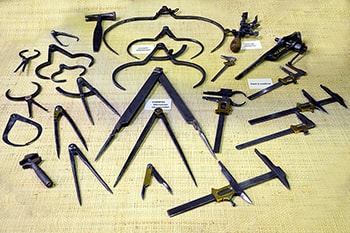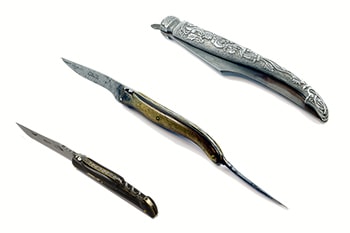Visit
You reach the Museum by Coutellerie de Laguiole Honoré Durand complex, industrial area la Poujade in Laguiole town.
Besides our Museum, discover the workshops (Forge & Cutlers) of our cutlery (free tour).
This experience will allow you to understand the history and the manufacturing of a Laguiole knife.
Some afternoons a week, be amazed in front of our blacksmith's work who handles iron and steel in order to create our Damascus steel.
To find your way to the Museum : Aubrac road in the east-north of Laguiole, then enter the industrial area on the right side « la Poujade » (we are not visible from the main road).
In front of our building is set up the monumental sculpture of the biggest Laguiole knife in the world (6 meters high)

Booking & prices
Individual and groups, open all year long.
Our friends the dogs (cats, ...) are welcome in our Museum. Please bring a leash.
Monday to Saturday : from 9 a.m. to noon and from 2 p.m. to 6 p.m.
July and August, 7 days a week : from 9 a.m. to noon and from 2 p.m. to 6 p.m.
Entry :
Individual adult fare : 3.50 euros (offered if you purchase in one of the Coutellerie Honoré Durand stores )
Child under age 12 : free
Group (minimum of 30 people) : free
Curator of the Museum : Honoré Durand
Location :
Aubrac road - Industrial area « la Poujade » - 12210 Laguiole – France
Close to the municipal camping
Phone : +33 (0)5.65.51.23.47
GPS address :
Latitude: 44.6840211 | Longitude: 2.8563970
